|
 BP
commissioning a WaveGlider to measure the impact of oil spills, etc.
The autonomous self-powered robot that looks a little like a surfboard is to monitor
the long-term impact of Deepwater Horizon oil spill.
Liquid Robotics has developed a new gadget for BP, which will be able to measure the long term impacts of the catastrophic Deepwater Horizon oil spill. The robot, called Wave Glider, can cruise through the water on a pre-programmed course for up to a year. Moreover, using the on onboard GPS antenna, the robot can be given new instructions remotely from the shore.
The device has two parts – the top platform, which floats on the surface of water and carries the
solar panels and sensors, and a winged bottom component, which has been designed to run 20 feet below the surface and attached to the surface component by an umbilical cable. The device generates power from the natural movement of the
water, which pushes it up and down.
Via GPS antenna, the device also includes a weather station and sensors that can detect dispersed oil and microscopic phytoplankton. The Wave Glider is propelled through the water by converting even the smallest waves into energy. Moreover, the onboard solar panels produce all the power necessary to operate the onboard electronic equipment. MAS
400 - 2021 TRANSATLANTIC Jupiter
Research Foundation is a partner in the Mayflower Autonomous Ship, a 15 meter
trimaran that is loaded with sensors and designed to survey the ocean on solar (including
a diesel engine) power. Below you can see who is involved in the MAS 400
project, with helpful links and information about each contributor.
THE
PEOPLE (TEAM) A - Z
|
Promare
Shipmates
|
-
|
-
|
-
|
-
|
|
-
|
-
|
-
|
-
|
-
|
|

|
|

|
|

|
|
-
|
-
|
-
|
-
|
-
|
|
Brett
Phaneuf
|
-
|
Fredrik
Soreide
|
-
|
Ayse
Atauz Phaneuf
|
|
-
|
-
|
-
|
-
|
-
|
|
MSubs
& MarineAI shipmates
|
-
|
-
|
-
|
|
-
|
-
|
-
|
-
|
-
|
|

|

|

|

|

|
|
-
|
-
|
-
|
-
|
-
|
|
Don
Scott
|
Rob
Shaw
|
Paul
Baretto
|
Oliver
Baretto
|
Luke
Shaw
|
|
-
|
-
|
-
|
-
|
-
|
|

|

|

|

|

|
|
-
|
-
|
-
|
-
|
-
|
|
Matt
Shaw
|
Meirwen
Jenking-Rees
|
Callum
McCullough
|
Graham
Goodwin
|
Martin
Goodwin
|
|
-
|
-
|
-
|
-
|
-
|
|
IBM
shipmates - IBM Technical Crew
|
-
|
-
|
-
|
|
-
|
-
|
-
|
-
|
-
|
|

|
|

|
|

|
|
-
|
-
|
-
|
-
|
-
|
|
Naaem
Altaf
|
-
|
Eric
Aquaronne
|
-
|
Franck
Barillaud
|
|
-
|
-
|
-
|
-
|
-
|
|

|
|
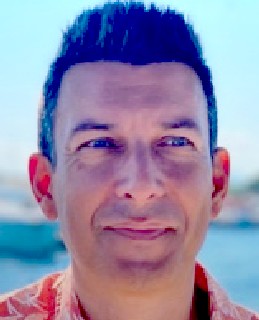
|
|

|
|
-
|
-
|
-
|
-
|
-
|
|
Minsik
Lee
|
-
|
Guilhem
Molines
|
-
|
Scott
Soutter
|
|
-
|
-
|
-
|
-
|
-
|
|
IBM
shipmates - IBM Technical Advisors
|
-
|
-
|
-
|
|
-
|
-
|
-
|
-
|
-
|
|
|

|
|

|
|
|
-
|
-
|
-
|
-
|
-
|
|
-
|
Andy
Stanford Clark
|
-
|
Rob
High
|
-
|
|
-
|
-
|
-
|
-
|
-
|
|
IBM
shipmates - IBM Research Crew
|
-
|
-
|
-
|
|
-
|
-
|
-
|
-
|
-
|
|

|
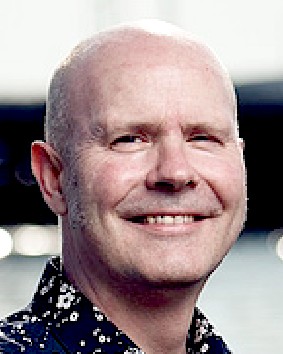
|

|
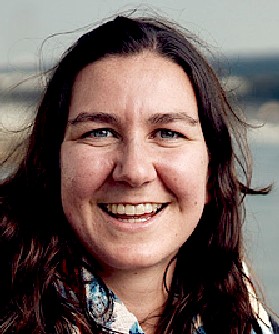
|
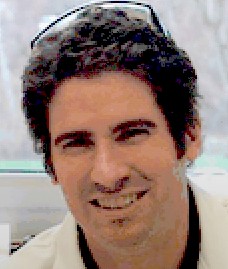
|
|
-
|
-
|
-
|
-
|
-
|
|
Gianmarco
Gabrieli
|
Simon
Holgate
|
Rui
Hu
|
Rosie
Lickorish
|
Patrick
Ruch
|
|
-
|
-
|
-
|
-
|
-
|
|
|

|
|
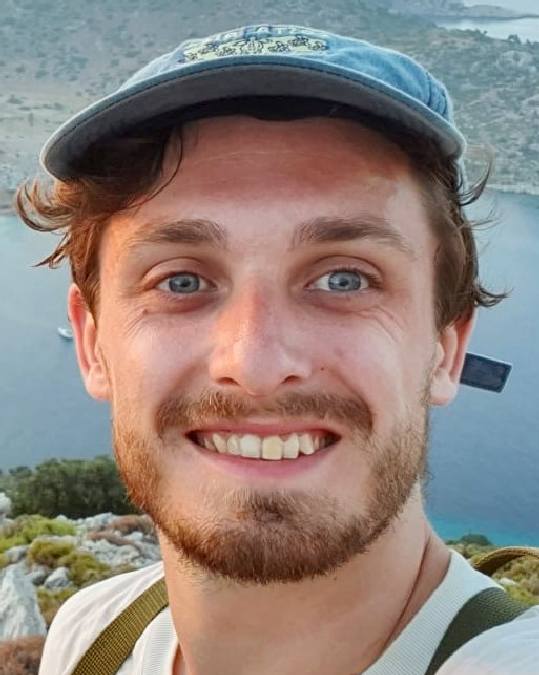
|
|
|
-
|
-
|
-
|
-
|
-
|
|
-
|
James
Sutton
|
-
|
Martin
Privet
|
-
|
|
-
|
-
|
-
|
-
|
-
|
|
With
huge help from
|
-
|
-
|
-
|
-
|
|
-
|
-
|
-
|
-
|
-
|
|

|

|

|

|

|
|
-
|
-
|
-
|
-
|
-
|
|
Grady
Booch
|
Jack
Chiu
|
Dave
Conway-Jones
|
Andreas
Martens
|
David
Wood
|
|
-
|
-
|
-
|
-
|
-
|
|
IBM
shipmates - IBM Marketing & Communications Crew
|
-
|
-
|
|
-
|
-
|
-
|
-
|
-
|
|

|

|
|

|

|
|
-
|
-
|
-
|
-
|
-
|
|
Jonathan
Batty
|
Carrie
Bendsza
|
-
|
Stephanie
Decker
|
Chris
Greco
|
|
-
|
-
|
-
|
-
|
-
|
|
Shipmates
- Web Portal Crew
|
-
|
-
|
-
|
|
-
|
-
|
-
|
-
|
-
|
|
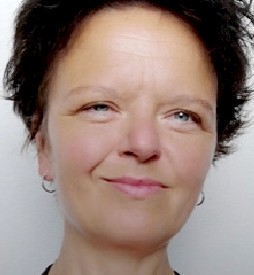
|

|

|

|

|
|
-
|
-
|
-
|
-
|
-
|
|
Ines
Kondor
|
Kyle
Richard
|
Sik
So
|
Raphael
Sacks
|
Kristaps
Karniitis
|
|
-
|
-
|
-
|
-
|
-
|
|
|

|

|

|
|
|
-
|
-
|
-
|
-
|
-
|
|
-
|
Khadija
Al-Selini
|
Christian
Chesher
|
Andrew
Kettenis
|
-
|
|
-
|
-
|
-
|
-
|
-
|
|
With
huge help from
|
-
|
-
|
-
|
-
|
|
-
|
-
|
-
|
-
|
-
|
|

|

|
|

|

|
|
-
|
-
|
-
|
-
|
-
|
|
Sophie
Blank
|
Darcy
Gleeson
|
-
|
Ed
Hope
|
Jordan
Karaze
|
|
-
|
-
|
-
|
-
|
-
|
|
|

|
|

|
|
|
-
|
-
|
-
|
-
|
-
|
|
-
|
Alex
Swain
|
-
|
Poojitha
Bikki
|
-
|

Artie,
AI chatbox communications
COMPANY
HISTORY Liquid Robotics is an ocean data services provider and developer of the
environmentally friendly Wave Glider vessel. Wave Gliders are unusual but
effective autonomous vessels that are powered by wave motion. They are rugged ocean-going platforms for gathering and remotely transmitting information about the surface of the ocean,
to include: water temperature, salinity, etc., and atmospheric conditions above
water such as wind speed.
According to Joe
Rizzi the Liquid Robotics story began with an
unusual interest in whale songs.
According
to internet sources, Joe Rizzi, is a successful venture capitalist and chairman of the
Jupiter
Research Foundation (JRF). It seems that he became fascinated with the songs of humpback
whales along the coasts of Hawai’i and Alaska, but then who wouldn't. We
are also keen to note monitoring of these herds.
Joe
wanted to capture their
songs “live” and pipe their music out to the world via the internet. This
turned out to be a more challenging, and interesting task than he could have
hoped for. Such a task is part of the plot of a novel by Jameson Hunter. See
Chapter 28 of Kulo
Luna - The $Billion Dollar Whale.
Joe
Rizzi together with his neighbor Bob Burcham began the project using a kayak
that Bob's had. They also put a pickle jar, hydrophone and a long cable to good
use. With these familiar itesm they began their first attempts to record
Humpback Whales singing.
The
team at Jupiter, including Roger, Derek and Joe spent over a year on this
project using different designs. Their experiments with various models and
concepts culminated in a set of fully functional prototypes in Hawaii, according
to their website.
As
with all such projects it took a lot of trial and error, re-engineering and in
particular fending off snapping shrimp. Facing many such challenges, Joe asked a family friend for assistance.
Thus, in 2005,
Derek Hine, an inventor (aerospace engineer) and Stanford educated robotics
designer, Roger Hine (his son) were asked to look at developing “an autonomous station-keeping data buoy.”
Where Roger was already building other unusual robotic devices for more conventional purposes,
this presented an interesting challenge and an opportunity that he
relished.
Roger
sprang into action purchasing a
large fish tank on craigslist,
which he placed in the middle of his family room - and there it stayed while the
wave glider design began to take
form over a period of many months. This yielded a very simple design that is
seen as a durable solution to the problems they encountered at the time.
Soon realizing the commercial potential for the technology, the collaborators launched Liquid Robotics Inc.
in January of 2007 with Roger as the founding CEO. They has solved the then
enigma of how to put a mobile device in the middle of the ocean and persistently
(continuously at regular intervals) send data back to shore.
 Liquid
Robotics - group photo, with two of their classic designs colored blue
ABOUT
JOE RIZZI
Joe Rizzi was previously a general partner of Matrix Partners LLP in Silicon Valley,
he has a good knowledge of the semiconductor industry. This was a venture capital organization focused on early stage software and communications companies. While at Matrix,
Joe helped launch many small and large companies, including SanDisk
Corporation and
Veritas Software (now
Symantec). He founded and ran several companies in Silicon Valley during the 1970s and 1980s.
According to LR's website, Joe founded the Jupiter Research Foundation in 2003.
He was also a founder and CEO of Intersil and
ELXSI, after having held executive positions at Fairchild Semiconductor. Joe Rizzi
graduated from the University of New Hampshire with both a bachelor’s and master’s degree in electrical engineering.
PAC
X CHALLENGE
In
November 2011, Liquid Robotics launched the PacX Challenge, an attempt to get
four Wave Gliders across the Pacific. They were launched from San Francisco’s St.
Francis Yacht Club and travelled together to Hawaii, a distance of nearly
6000km, arriving in March 2012. The Wave Gliders launched from Hawai’i
on 21 May 2012 for the second leg of their voyage, with two headed across the
Mariana trench to Japan
and two to Australia.
On
20 November 2012, the first of the Wave Gliders, Papa Mau (named in honor of Mau
Piailug), reached Australia. Papa Mau completed its 9,000 nautical mile
(17,000 kilometer) journey across the Pacific
Ocean to Australia, setting a new world record for the longest
distance traveled by an autonomous vehicle (across the Pacific).
GUINESS
WORLD RECORD
In November 2012, a Liquid Robotics' Wave Glider autonomous underwater glider set a
Guinness World Record for the "longest distance traveled on the Earth's surface by a robot" by travelling over 14,000 kilometres (9,000 mi) on an
autonomous journey of just over one year
duration.
PACX
COMPETITION
The
PacX Challenge awards a prize to the best research proposal submitted utilizing
data gathered on the transpacific crossing. The prize comprises a $50,000
research grant (courtesy of BP, the oil and gas industry supporter of the PacX
Challenge) and six months of Wave Glider time. The winner will work with Liquid
Robotics to chart the course and mission for the six month deployment, including
the configuration of onboard sensors.

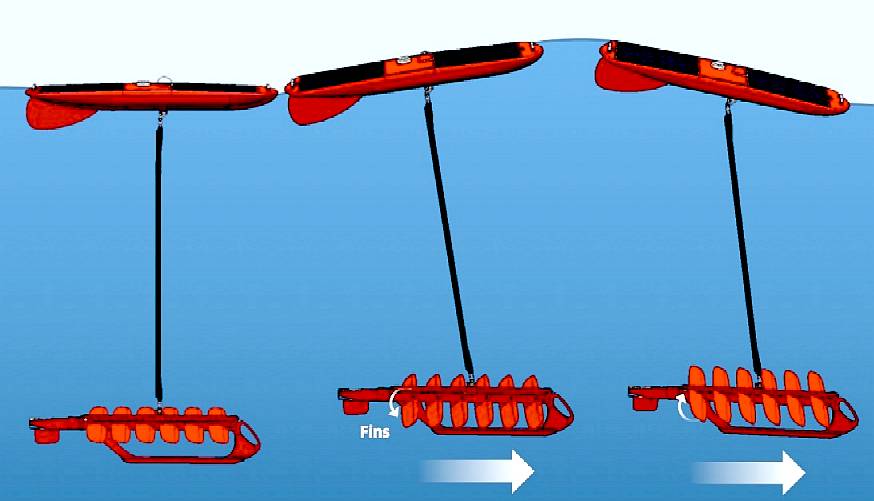
CONVERTING
WAVE
MOTION
Wave
powered vessels are nothing new and there are many ways of harnessing that
energy. The Wave Glider uses two hull components, one on the surface (a float)
and one submerged (tethered submarine
vessel). This is because wave motion is greatest at the water’s surface, decreasing rapidly with increasing depth. The Wave Glider’s unique two-part architecture exploits this difference in motion to provide forward propulsion.
A rising wave lifts the Float, causing the tethered Sub to rise. The articulated wings on the Sub are pressed down and the upward motion of the Sub becomes an up-and-forward motion, in turn pulling the Float forward and off the wave. This causes the Sub to drop, the wings pivot up, and the Sub moves down-and-forward. This process is repeated again and again as long as there is
wave motion on the
surface. The propulsion using this method is not rapid, but it is reliable.
LIQUID
ROBOTICS IN THE MEDIA

CNN MONEY
- MAY 2012
Joe Rizzi first heard the underwater songs of humpback whales a decade ago while scuba diving near Hawaii. Enthralled, he decided to pipe their migration music into his beachfront home.
Here's the difference between Joe Rizzi and your average souvenir seeker: He's a rich venture capitalist. Rizzi's quest to capture the whalesong started with a glass pickle jar, a hydrophone and a kayak. It ends with Liquid Robotics, a Sunnyvale, Calif., company with $22 million from investors, 80 employees and customers like BP Oil and the
National Oceanic Atmospheric
Administration.
Liquid Robotics operates a fleet of wave-propelled, solar-powered ocean robots. Designed to capture Rizzi's elusive music, they have the potential to do much more: predict tsunamis, track fish, snuff out offshore oil leaks and patrol waters for national security threats. They use no fuel, produce no emissions and can travel up to 2,000 miles using wave power alone.
None of that was part of Rizzi's original plan. The Silicon Valley venture capitalist planned to retire at his home in Kona, Hawaii, after two decades of starting and investing in tech companies like Symantec (SYMC, Fortune 500) and SanDisk Corp. (SNDK, Fortune 500) Then he heard the
humpback whales migrating to Alaska.
"It's an enigmatic sound," Rizzi says of the songs that became his obsession. "The more you listen to it, the more captivating it becomes."
On a lark, he convinced his neighbor to help him transmit the sounds to his home using a hydrophone (an underwater microphone), a kayak and a cable strung a hundred feet from the shore. But they couldn't hear the whales.
Rizzi needed to move the hydrophone further into the ocean. His solution: a ham radio transmitter inside a pickle jar and a wireless hydrophone hung off a kayak anchored a few hundred yards off the shore.
The police soon showed up. When they found the empty kayak, they thought someone had drowned. No humans died, but the battery did within two hours.
About that time, Rizzi started a nonprofit, the Jupiter Research Foundation, to study humpback whales. He invited several techie buddies to come stay with him in Hawaii, drink beer, play in the water and help with his whale project.
Together, they upgraded his invention with a waterproof case and a motorcycle battery charged via solar panel. Still, he couldn't hear whales
- all he got was a noise that sounded like frying bacon. The group tweaked and tested the electronics for months before locals explained that the noise was tiny snapping shrimp. Rizzi's device needed to be at least a mile from shore, they told him, to hear the whales.
Rizzi tried launching his contraption out to sea, but 50 m.p.h. winds and 10-foot waves battered the craft.
In spring 2005, three years into his quest, Rizzi had lunch in California with Roger Hine, the former director of
robotics at semiconductor equipment maker Asyst Technologies. Hine offered Rizzi a solution: How about a floating surfboard powered by a fin 20 feet below the water?
The fin would act like a whale's tail and propel the craft using the motion of waves for energy. A week later, Hine made a miniature model that floated inside a fish tank, which he presented to Rizzi and several others at the Jupiter Research Foundation.
"Here we were, six grown men sitting around a fish tank for five hours watching it crash into the sides," Rizzi recalls. "Roger had an absolutely unique idea and a design that looked like it might work."
A test run of a life-sized version off the shores of Hawaii's Big Island caught the eye of Coast Guard officials, who said they could use one for the agency. As word began to spread, Rizzi got more phone calls
- and soon, he and Hine knew that this was no longer just a personal project.
Rizzi and Hine launched Liquid Robotics in 2007. For the next two years, they refined their prototype into a dependable craft they could actually sell. It needed electronics that would work consistently in salt water. It needed to survive
severe weather, 100 m.p.h. winds and 50-feet waves. And it needed the ability to propel itself when there were few waves or none at all.
"It was deceptively complex," Rizzi says.
Today, solar power runs the robots' computers, which chart a course using GPS and collect environmental data with onboard sensors. A cable dangles an underwater glider that looks like window shutters, flapping to push the craft forward.
"They had inadvertently solved one of the great conundrums - they found a way to harness wave power for propulsion," says Alan Salzman, CEO of Vantage Point Capital Partners, a prominent Silicon Valley venture firm that invested in Liquid Robotics. "When I saw it, I said, 'Oh my god, this is brilliant.'"
The company has since built 120 robots, called wave gliders, that can be deployed to collect data for a wide variety of customers, including oil and gas companies, fisheries, and defense, meteorology and maritime security firms. Traditionally, those industries have relied on ships, buoys or
satellite imagery to collect oceanic information.
None are cheap: a ship could cost $150,000 a day and sending out a buoy can run $1 million to $3 million. Liquid Robotics sells its robots for $200,000 each, or rents them for data collection at $1,500 to $3,000 per day.
"You just put it off the dock, tell it where to go and a month later, it's there," says Dr. Jonathan Berger, senior scientist at Scripps Institution of Oceanography at the University of California San Diego. His agency purchased two $200,000 robots for real-time monitoring of tsunami threats across the globe.
The company's biggest challenge, Berger says, will be convincing more people that the technology will be reliable for the long-term.
As for Rizzi? He is not entirely retired, still serving as chairman of Liquid Robotics. But he can finally listen to whales sing from his living room - which could have been heard online
recently but the site appears to be down, unless we picked a bad moment.
http://www.jupiterfoundation.org


FORBES - JULY 2011 - SEA CHANGE
WE’RE 25 MILES OUT in the Gulf of Mexico, plowing through rough seas to rendezvous with a wave-and-solar-powered robot named G4, when Brad Woolhiser’s laptop pings. We’ve got mail from G4, which is completing a two-month mission for oil giant BP to count dolphins and whales and detect petroleum in the ocean surrounding the site of the Deepwater Horizon disaster. Woolhiser is a technician for Liquid Robotics, the Silicon Valley startup that makes the robots called Wave Gliders, and the message on his Dell seems a bit alarming.
“Proximity alert,”warns G4, telling its minders that the robot’s collision avoidance system has detected a ship identified as the Baltimore a mile away. As our boat pitches and yaws, Woolhiser switches screens and G4 appears on a Google map, its trajectory marked by a series of “bread crumbs”the robot drops via satellite every five minutes. The 250-pound, surfboard-size G4 is no match for the Baltimore, a 535-footlong tug, so some 2,500 miles away, at Liquid Robotics’ headquarters in Sunnyvale, Calif., a Wave Glider operator sends a signal over the Internet telling the $100,000 robot to alter its heading.
“They’re not self-aware enough to change course by themselves–yet,”jokes Woolhiser, a tan and muscled 43-year-old who has flown in from Liquid Robotics’ R&D center in Hawaii to help retrieve two Gliders and launch three other BP-commissioned robots that are strapped to the deck of the Defender 1, a 54-foot former Florida police cruiser.
While Wave Gliders haven’t achieved Skynet-like consciousness, they represent a revolution in robotics that promises to advance ocean exploration and exploitation, much as the Hubble Space Telescope opened the cosmos. Packed in their 7-by-2-foot titanium-framed fiberglass bodies are terabytes of cellphone flash storage, a dual-core ARM processor running open Linux software, a battery pack, sensor arrays, a GPS unit, and wireless and satellite communications systems. It’s all powered by two off-the-shelf solar panels that cover the top of the Glider.
But it is what’s unseen 23 feet below the ocean’s surface that makes the Wave Glider a perpetual motion green machine and that its investors are gambling will mint money from oil companies, scientists and the military. Tethered to the floating vehicle are six three-and-a-half-foot “fins”attached to a rudder. As the fins tap the energy generated by the up-and-down motion of ocean waves, they move to propel the robot at speeds of up to 2 knots. No fuel–fossil or otherwise–required.
The Wave Glider’s capacity to operate autonomously at sea for months on end gathering data from uncharted reaches of the ocean has attracted $40 million in funding, including $22 million from VantagePoint Capital Partners, a leading Silicon Valley green tech investor, and oil industry services behemoth Schlumberger. Vantage-Point’s chief executive, Alan Salzman, sees a huge potential market among companies and scientific organizations that now must spend anywhere between $30,000 and $150,000 a day to staff and outfit a carbon-spewing deep-ocean vessel. “Resupplying a ship in the middle of the ocean is staggeringly expensive,”he says. “The Wave Glider has enormous implications in terms of the ability to provide monitoring and information on things in the ocean we otherwise have no access to.”
At Liquid Robotics’ headquarters two large flat screens track the 60 Gliders currently roaming the world’s oceans. Besides working for BP and two other oil companies that Liquid Robotics is not permitted to identify, the robots have been deployed off the Japanese coast to monitor radiation, are dodging melting icebergs in the
Arctic to measure ocean salinity and are tracking Somali pirates. Some Glid ers gather climate change data and count fish while others have been dis patched on classified missions by U.S. intelligence agencies. The company is also talking to energy developers about supplying robots to survey areas for potential offshore wind farms.
A stunning photo of a humpback whale leaping into the air flashes on a third big screen, the image captured by a Wave Glider’s 12-megapixel camera. The whale is something of a totem animal for Liquid Robotics, as the Glider grew out of efforts by former Silicon Valley venture capitalist Joe Rizzi and roboticist Roger Hine to build a buoy to listen to the songs of the humpback and transmit the data to shore. Rizzi had started the nonprofit Jupiter Research Foundation in Hawaii in 2003 to develop environmental technologies and spun off Liquid Robotics in 2007 to commercialize what became the Wave Glider.
“It was just kind of a crazy project,”says Hine, the co-inventor of the Wave Glider, who served as Liquid Robotics’ first chief executive and is now the company’s chief technical officer. “If you want to keep robots cost-effective and build lots of them, they’re going to have a limited power source, whether it’s coming from batteries or from a fuel tank. So where are we going to get this energy?”The answer, of course, was using wave energy–not for generating electricity, as countless green tech companies have tried to do, but for propulsion. The Glider can achieve speeds of a quarter-knot on waves as small as 1 inch.
Liquid Robotics’ rivals in the nascent market for emissions-free oceangoing drones include Teledyne Webb Research and iRobot. However, they both use a different propulsion technology called “buoyancy gliding”that exploits temperature differences in the ocean to propel their robots underwater.
The challenge for creators of earthbound robots has been to develop the bots’ artificial intelligence and mechanical dexterity to allow them to manipulate objects and respond to a complex environment. The Wave Gliders, on the other hand, are the Roombas of the seas, relying on software and sensors to navigate their wide-open aquatic world. They are essentially information-gathering machines or, as Liquid Robotics Chief Executive Bill Vass, a former top Sun Microsystems executive and Pentagon official, puts it, “a cloud data center at sea.”
Wave Gliders collect enormous amounts of data and crunch the numbers–distilling 4 gigabytes of raw data to a kilobyte of relevant information a client wants, for instance–and then activate their Iridium satellite link to beam the result to servers on land. Some data, such as huge sound files of marine mammal vocalizations, remain onboard for future retrieval.
In a sign of how the company’s fortunes ride on software innovation, Vass in August hired James Gosling, creator of the Java programming language, away from Google.
Two-thirds of Liquid Robotics’ revenue–the company is not yet profitable–currently comes from the sale or customization of Wave Gliders with another third from selling data sub scriptions. Vass aims to transform the company, which projects its 2011 revenues will be $13 million to $14 million, into a robotic Salesforce.com, with 80% of its income derived from data services by next year. Rather than purchasing and operating Wave Gliders themselves, customers hire Liquid Robotics to outfit and deploy the robots to complete a specified mission and buy the data they gather. Data services packages range from $500,000 a year for Wave Gliders deployed within 50 miles of shore to $1 million for deep-ocean operations.
“It would be $35 million a year for a ship to do the same thing,”says Vass, 49, at Liquid Robotics’ factory, where some half-dozen yellow longboard-shaped Wave Gliders are being hand-assembled while others are being wheeled around the parking lot on carts to make sure their solar arrays and electronics systems are working properly. “And you can’t send a ship out for a year without refueling. It’s very dangerous to be at sea–why send a person when you can send a robot?”
It’s a pitch that resonated with Helmut Portmann, director of the National Oceanic & Atmospheric Administration’s National Data Buoy Center in Mississippi. Portmann’s agency operates a network of ocean buoys that collect meteorological data used for weather forecasting. The center must dispatch ships to service the buoys, whose mooring lines often get tangled in fishing lines or are severed by collisions with boats. “The Wave Glider gives us a lot more options to lower our deployment costs and eliminate mooring failures for us,”says Portmann, who previously worked on robotic systems for the Navy.
The center bought two robots and has been testing their ability to replace buoys and collect accurate weather information. This fall Portmann will send one to hover over tsunami sensors embedded on the ocean floor to collect data and beam it back to shore. Portmann is less sure about the Wave Glider’s utility in supplementing an array of 70 buoys that collect climate change data across the South Pacific. “You have to maintain position very well because you have to get the same measurements at the same point on Earth over a long time,”he says from Tahiti, before boarding a NOAA ship on a mission to service the buoys.
The Navy’s Irregular Warfare Office runs a fleet of two Wave Gliders. Rear Admiral Sinclair Harris, the office’s director, says the Navy has been testing sensor payloads and has deployed the Wave Gliders around the Hawaiian Islands and off the Virginia coast to gather data on ocean conditions and perform other tasks.
Harris compared experimentation with the Wave Gliders to the early days of launching airplanes from the decks of ships. “You didn’t know all what you could do or where you could go, but look how quickly that was developed and aircraft carriers quickly followed,”says Harris. “I think we’ll see a similar impact with this technology. We live in an irregular warfare environment today, and if we can do things without putting a man or mammal in danger or polluting the environment, that’s all the better.”
The Wave Gliders’ stealthy profile and ability to run silent for months at a time has obvious military uses–patrolling coasts, tracking enemy vessels–though the robots’ pokey pace is a drawback, Harris allows.
The Navy’s Meteorology & Oceanography Command is also testing two Wave Gliders. “This allows us to sense the atmosphere and ocean anywhere in the world and use that in formation in a tactical sense to support our ships and troops where they’re de ployed,”says Rear Admiral Jonathan W. White, the unit’s commander. “But it also allows us to look at climate change anywhere in the world.”
While Liquid Robotics won fans among military officers and scientists, it had little luck initially in luring com mercial customers. Then came the 2010 Deepwater Horizon disaster and the massive environmental monitoring challenge BP faced in the oil spill’s aftermath. A week after BP capped the Macondo well, Liquid Robotics dispatched its first Wave Glider to the Gulf for the oil company. A year later six robots operated by Liquid Robotics are trawling the ocean for BP. “We have included several types of data collection packages and are continuing to learn where this new technology might be applied,”Arden Ahnell, a BP science manager, said in an e-mail.
Back out on the Gulf aboard the Defender 1 on an overcast August day, we’re on our way to recover G4, the Wave Glider that has been counting marine mammals–using a hydrophone to record their vocalizations–and gathering data about oil in the water around the Macondo well. But first the Liquid Robotics team needs to drop off three robots that will embark on new missions. As the company moves toward a robots-as-a-service model, the logistics and cost of deploying and recovering Wave Gliders have become bigger challenges. Hence, the presence on the boat of Keith Kreider, an oil-and-gas industry veteran who is Liquid Robotics’ newly minted vice president of marine operations. It’s his second day on the job, and Sunnyvale, we have a problem.
Woolhiser and another technician, Dustin Boettcher, are trying to replace plastic rings that protect sensor arrays embedded in the Glider’s belly with copper ones designed to repel barnacles and other marine gunk that can interfere with the expensive gadgets. But the new rings won’t fit. “These sensors are crucial to the mission,”says an exasperated Boettcher, 25, noting they’ll measure the amount of oil seeping from vents on the seabed. After a couple hours of tinkering, Kreider, 50, hits upon the solution. He immerses the rings, which have been out in the hot Florida sun, in ice. Bingo.
Keeping the Gliders free of sea scum that can slow their speed and interfere with sensors and solar panels is key to undertaking extended missions lest they turn into robotic reefs. And so while two of the Gliders on deck sport standard-issue yellow paint, the third, G1, is coated in a dark gray “antibiofouling”material. When we reach the launch spot some 35 miles southwest of Panama City, Fla., the crew attaches G1 to a crane and carefully lowers the robot into the ocean as the boat rocks and rolls. When a tie line is removed, the robot drops its propulsion unit and takes off like a shot across the waves to begin its task of mapping the Loop Current, a fast-moving warm column of water that meanders throughout the Gulf and can push an oil rig off its moorings. Oil companies typically send out ships to monitor the Loop Current, but the hope is that the Wave Gliders will be able to provide more detailed data at a far lower cost.
The two other robots, G3 and G5, are launched on their missions, and we speed off to recover G4. Though the robot’s GPS coordinates are punched into the boat’s autopilot, finding the equivalent of a 7-foot surfboard in the chop is no easy task. An operator in Sunnyvale turns on G4′s light beacon, which sits atop a 3-foot mast containing a weather station, and Captain Gary Buholm slowly circles until the robot appears behind a wave surrounded by fish sheltering in its shadow.
Riding low in the water, G4 looks a bit battered after two months at sea. Its hull is encrusted with barnacles and parts of its solar panels have a sea slime coating that resembles Wookiee fur. Woolhiser lassos the robot and guides it to the crane to be hoisted on deck. Vass wants 2,000 Wave Gliders
sailing the seven seas a year from now. The next iteration will likely sport solar-powered thrusters to speed its way when waves are small. Possible future models will be able to dive like submarines to perform tasks on the ocean floor, or serve as deep-ocean fish farmers, feeding fry and hauling the mature catch to shore.
Vass imagines that his drones will serve as a platform and customers will dream up new technologies and uses, much like apps on an iPhone. “It’s kind of a perfect storm of low-cost cloud computing, cheap sensors, communications and breakthroughs in robotics combined with the fact that the world is realizing that the ocean is not infinite and the resources there have tremendous value.”
A few hours into the return journey, the sat phone trills. It’s Sunnyvale calling: One of G5′s sensor arrays is malfunctioning and the robot must be retrieved.
As it turns out, finding a robot in the dark isn’t that hard. When we near its location, all the bots turn on their lanterns, and three lights appear spread across the horizon. G5 is hauled aboard, the faulty sensor swapped out, and the robot sent back on its way into the night.

MANAGEMENT
Liquid Robotics Board of Directors:
Roger Hine, Co-Founder, CTO and co-inventor of the Wave Glider
Mark Leslie, Managing Director, Leslie Ventures
Robert Momsen, General Partner, InterWest Partners
Joseph D. Rizzi, Chairman of the Board Liquid Robotics and President & Executive Director,
JRF
Alan Salzman, Chief Executive Officer, VantagePoint Capital Partners
Thampy Thomas, Founder, NexGen
John W. Thompson, Chairman of the Board of Directors, Symantec Corp.
Bill Vass, President & CEO, Liquid Robotics, Inc.
Ashok Belani, EVP Technology, Schlumberger Limited
Strategic Advisory Board - The strategic advisory board is formed of 26
members.
Defense & National Security
Marv Langston, Former Dep. Asst. Secretary of Defense, USDOD
Archie Clemins, Admiral, US Navy, former Commander in Chief, US Pacific Fleet
Conrad Lautenbacher, VP, Science Programs, CSC, ATG; Vice Admiral US Navy (ret), Administrator of NOAA
Albert Baciocco, Vice Admiral US Navy, former Comdr Submarine Group SIX, former Chief of Naval Research (CTO)
Joanne Isham, Former L-1 and BAE executive, former Deputy Director for NGA and CIA
Roberta Lenczowski, Former Executive, National Geospatial-Intelligence Agency (NGA)
Arthur "Art" Money, former Asst Secretary of Defense (C3I) USDOD, former president of ESL, Inc.
John Tozzi, Rear Admiral, US Coast Guard (ret)
Cosmo Perrone, Former Director of Security for the Port of Long Beach (CA)
Scientific & Commercial
Robert F. Kennedy Jr., International Environmental Advocate & Attorney
Edward Lu, former NASA astronaut, former Google exec advanced programs, chief of innovative
apps.
James Gosling, creator of Java, chief software architect, Liquid Robotics
John Gage former partner, Kleiner Perkins Caufield & Buyers
James Bellingham, Chief Technologist, Monterey Bay Aquarium Research Institute (MBARI)
Adrian Cockcroft, Cloud Architect, Netflix
Scott McNealy, Chairman Wayin, former CEO and founder Sun Microsystems
Karl Rauscher, Bell Labs Fellow, Distinguished Fellow and CTO of the EastWest Institute
Trip Ray, Energy Software and Services Executive
Chris Welsh, Virgin Oceanic Co-Founder and Pilot
John Young, Seismic Expert formerly with ExxonMobil
Rod Nelson, Vice President, Schlumberger
Gregory Poulos, Maritime Attorney, Partner, Cox, Wooton, Griffin, Hansen & Poulos
Tim Richardson, Strategic Advisor, Georgia Tech Research Inst, Board member at IXYS
Corp, Samplify, JRF
Paul Sallaberry, Venture Partner, Jafco Ventures
Derek Hine, Co-Founder, Liquid Robotics
Claude Brancart, Ocean engineering consultant, Past President & Chair, AUV Technology Committee, IEEE Oceanic Engineering Society
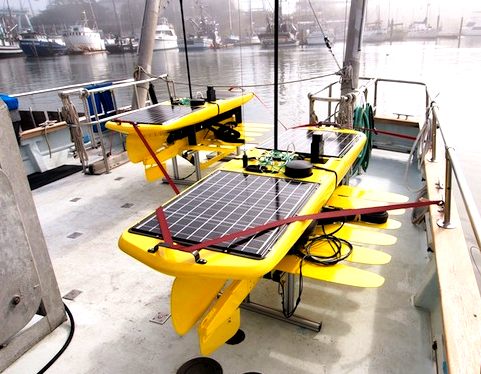
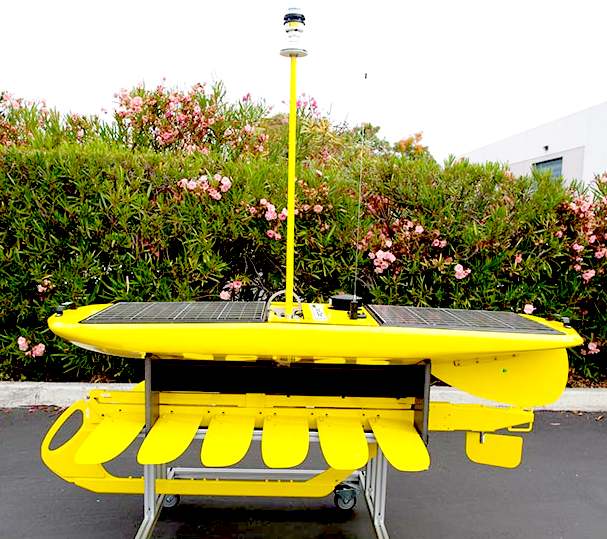
LEFT:
Two
Wave Gliders onboard a ship in the more usual bright yellow livery - RIGHT: On
display in Sunnyvale California WAVE
GLIDER PRODUCTS The Wave Glider is equipped with
computers for navigation and payload control,
satellite communication systems, and ocean sensors to measure the environment around it. Sensors have been integrated to measure weather, sea conditions, water quality and chemistry, living organisms, bottom topography and currents. Acoustic microphones and arrays have been adapted to record passing ships and the vocalizations of whales and other mammals. The power needed to operate the sensors and computers is provided by
solar
panels, which are used to recharge lithium-ion batteries.
The Wave Glider can be programmed for autonomous operation, or it can be steered by a remote pilot over the Internet. Continuous, near real time, communication is provided via satellite, cellular phone or
radio links for piloting and data transmission. The Wave Glider is composed of two parts: the float is roughly the size and shape of a surfboard and stays at the surface; the sub has wings and hangs 6 meters below on an umbilical tether. Because of the separation, the float experiences more wave motion than does the sub. This difference allows wave energy to be
harvested to produce forward thrust.
In April 2013, Liquid Robotics announced a follow-on to the original Wave Glider, with the capability to do more data analysis and processing on-board the floating unit while providing additional oceanographic and atmospheric data collection and transmission services, a floating "server rack" for providing services to the fishing and oil & gas industries.

METOC
Wave Glider
Wave
Gliders come in various guises. There are two Wave Glider solutions for Meteorology and Oceanography. The base model gathers weather observations,
meteorology and ocean current data. The deluxe model (METOC Plus) adds wave and water sensors to measure waves (height, direction, period and spectrum),
water temperature, dissolved oxygen and salinity.
GATEWAY
Wave Glider
Wave Gliders provide
a low-cost and persistent platform to communicate with subsea equipment and instruments via acoustic modem, providing a link by satellite communications to shore or other vehicles and installations. Depending on the application, extracted data can be transferred or recorded on the Wave Glider for later retrieval.
SHARC
Defense and National Security applications have
a requirements that the SHARC (Sensor Hosting Autonomous Remote Craft) Wave Glider is designed to meet and exceed.
This versatile platform is designed to be acoustically silent for stealth
missions, with a low visual and radar
signature. As with other WaveGliders, SHARC harvests all of its energy for propulsion mechanically from the ocean waves.
Power for onboard computing, sensors, and secure satellite communication links is provided by solar
energy from sealed PV panels. Two networked payload boxes and various mounting points provide flexibility for user-integrated sensor and communications payloads.
SPECIAL
ORDERS
Liquid
Robotics will configured Wave Glider Systems to order to provide maximum flexibility to meet the measurement and communications requirements of our customers’ scientific and
for dedicated commercial missions. Starting from one of several base configurations, sensors, acoustic modems, instruments, communications antennae and auxiliary
batteries can be added.
If you would like to modify your custom Wave Glider beyond their off-the-shelf options, Liquid Robotics offers a variety of services to support
you mission parameters. They offer a complete design service and a support program specifically for payload integrators who wish to do their own design work.
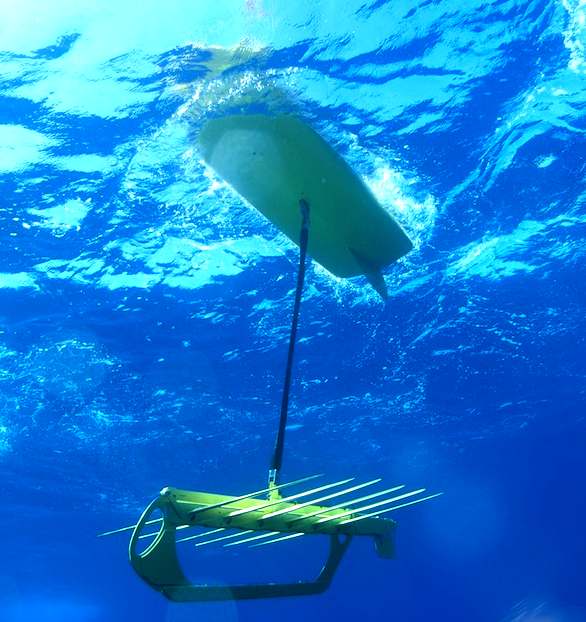
The
Wave Glider's tethered submarine foil drive
GENERAL
SPECIFICATIONS
Vehicle configuration
- Sub & Float joined by 4m (13ft) tether
DIMENSIONS
Float: 290cm x 67cm (114in x
26in)
Sub: 21cm x 190cm (8in x 75in)
Wings: 143cm wide (56in)
Weight
- 122kg (270lb)
ENDURANCE
Operates for years at sea (with
regularly scheduled maintenance)
WATER
SPEED
Aux. thruster off: 1.0kts (SS1) - 2.0kts (SS4)
Aux. thruster on: 1.5kts (SS1) - 2.3kts (SS4)
DEPTH
RATING - Continuous wash and spray, Brief submergence to 2m (6.5ft)
OBSERVABILITY
- Visibility mast, with flag, marker light and radar target enhancer
SHIPPING
Air freight compatible,
in 3 wooden crates: 305cm x 61cm x 61cm (10ft x 2ft x 2ft)
Crate 1: 136kg (300lb) - Crate 2: 104kg (230lb)
COMMUNICATIONS
Over-the-horizon
- Iridium® 9602; RUDICS (option); Cellular (option)
Local - 802.11g WiFi
POWER
Propulsion - Conversion of wave energy into thrust, with electric auxiliary thruster
Battery
- 980 Wh rechargeable Li-Ion (standard)
Increments (980 Wh) up to 7.8kWh
Solar PV power 170w peak
NAVIGATION
Heading - Solid state magnetometer
GPS - 12 channel WAAS capable
Accuracy - 3m radius CEP50
Station keeping - 40m radius CEP90 (SS3: current <0.5kts)
OPERATION
Mission control - Chart-based GUI, Multi-vehicle display, Waypoint & course generation
Status monitoring
- Text & visual status indicators accessible via web interface
SMS and email alerts, Programmable inclusion & exclusion zones
Autonomous navigation
- Programmable waypoint course
Follow course and hold/loop, Station keeping at target
SOFTWARE
Operating system - Regulus
Features: Multi-tenant, Mesh, Swarm
Collision avoidance autonomy
- High availability - On-board data processing
In-situ application updates

INTELLECTUAL PROPERTY
Liquid Robotics holds 5 U.S. and 14 foreign patents relating to its technology. These include:
Chile (48.628); China (2011 101405179); Egypt (25194); Indonesia (P0027767); Israel (192828); Japan (2009533257); New Zealand (570562 and 592743); Singapore (144487); South Africa (200806769); United States (7,371,136; 7,641,524; 8,043,133 and 8,287,323).
Additional U.S. and non-U.S. patent applications pending.
CONTACTS Corporate Headquarters
Liquid Robotics, Inc.
1329 Moffett Park Drive
Sunnyvale, CA 94089, USA
Website: www.liquidr.com
Phone +1 408 636 4200
Fax +1 408 747 1923
Email
joanne.masters@liquidr.com
Legal
Issues
Doug Carlen
VP Legal Affairs
Liquid Robotics, Inc.
Phone: +1 408 636 4249
Mobile: +1 408 458 6639
Email: doug.carlen@liquidr.com
Engineering & Test Center
Liquid Robotics, Inc.
P.O. Box 44370
61-3661 Kawaihae Rd.
Pier 1, Kawaihae Harbor
Kamuela, HI 96743, USA
LINKS
& REFERENCE
http://www.forbes.com/forbes/2011/0926/technology-human-ingenuity-sea-change-gulf-robot-woody.html
http://money.cnn.com/2012/05/22/technology/liquid-robotics/
http://www.jupiterfoundation.org
http://maracoos.org/content/fetchtsunami-node-wave-glider-ocean-observing-demonstration-project
http://smart-future.org/2011/10/the-interesting-thing-about-ideas/
http://www.ecofriend.com/bp-unveils-self-powered-wave-glider-to-measure-impact-of-oil-spill.html
http://spectrum.ieee.org/liquid-robotics-wave-gliders-begin-historic-swim-across-pacific
http://en.wikipedia.org/wiki/Liquid_Robotics
Vehicle
As A Service
Jupiter
Foundation
Professional
Services
http://folk.ntnu.no/eirikbo/wavepropulsion/index
http://www.newscientist.com/wavepower-ships-could-bring-cheaper-clean-electricity
http://www.wavepropulsion.com/
Ashburton
Guardian (1897). A boat with fins. Volume XVIII, Issue 4281, 30 August
1897.
Bose,
N. & Lien, J. (1990). Energy Absorption from Ocean Waves: In Proc. R. Soc.
Lond, vol.B 240, pp. 591–605.
Fabre,
O. Japan sailor takes on pacific in wave-powered boat. Reuters,
March 17, 2008
Gause,
J. A. Flexible fin propulsion for vessels GB Patent 1176559. Sept. 7, 1966. Patented Jan. 7,
1970
Gause,
J. A. Water-borne propulsion system flexible fin members US Patent 3,453,981.
Apr. 24, 1967 Jul 8 1969
http://www.liquidr.com/products_services/overview.html
Forbes
2011 technology-human-ingenuity-sea-change-gulf-robot-woody
CNN
money 2012 technology/liquid-robotics
http://www.hamiltonrobotics.com
http://liquidr.com/pacx/pacific-crossing.html
|






























































